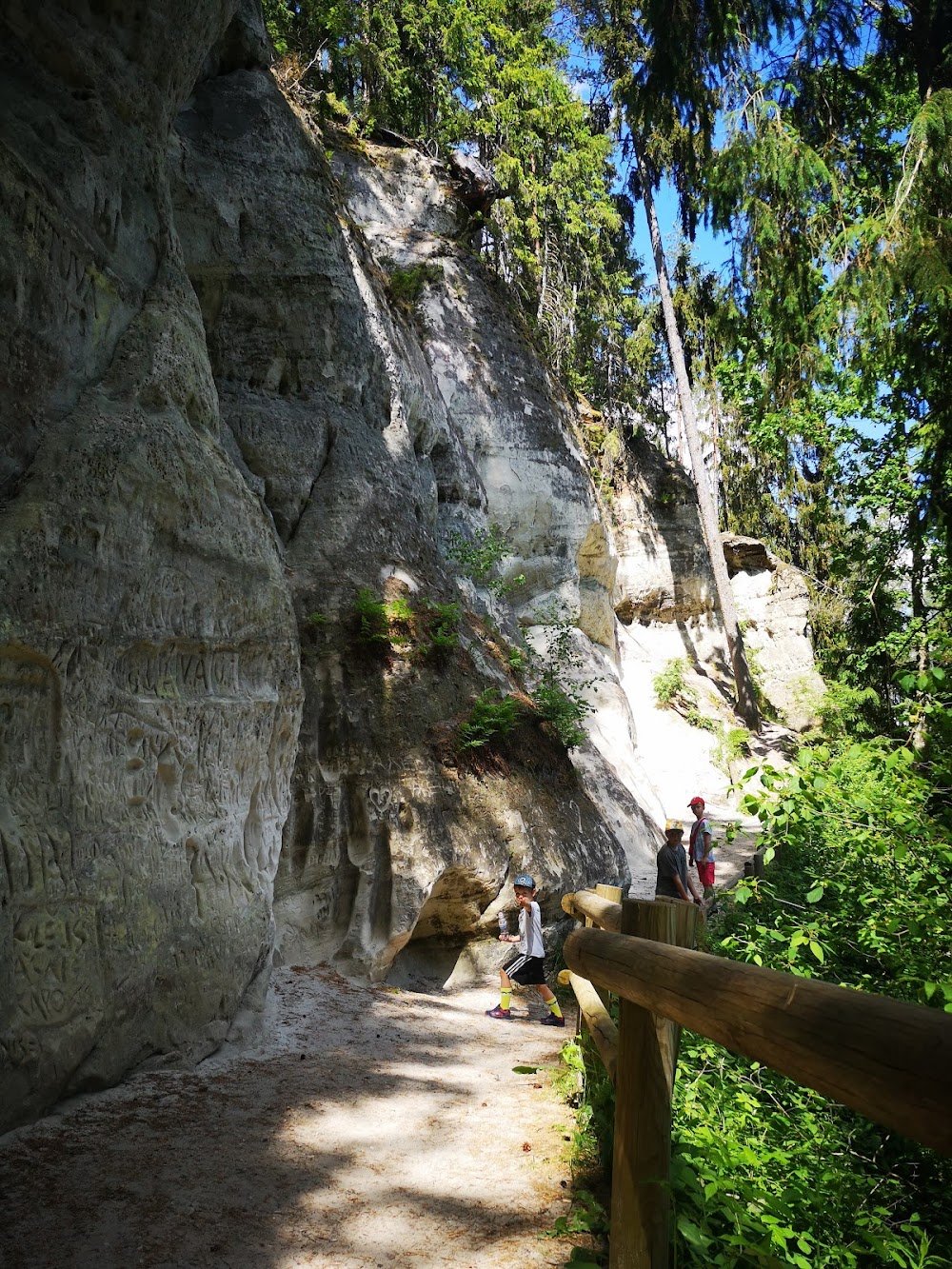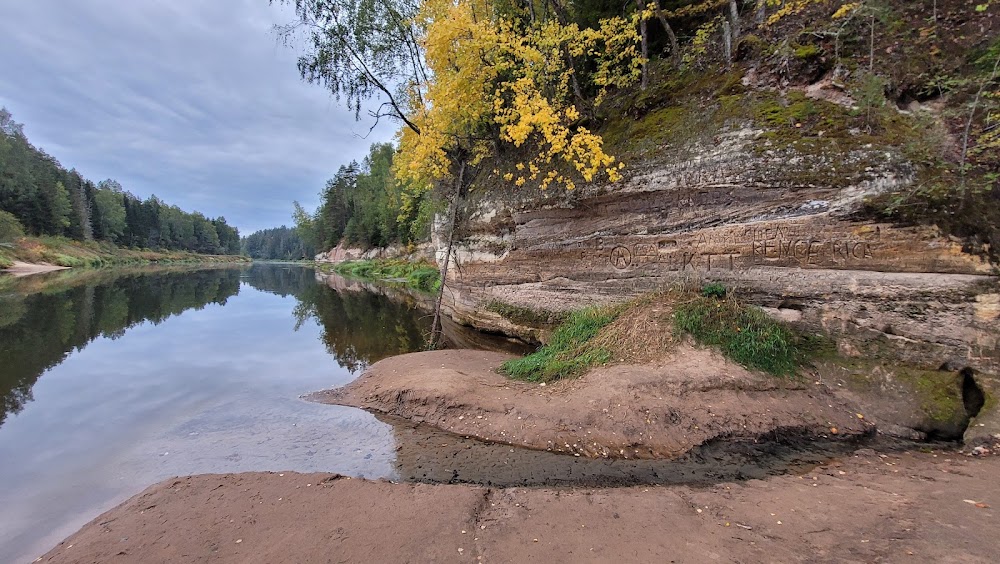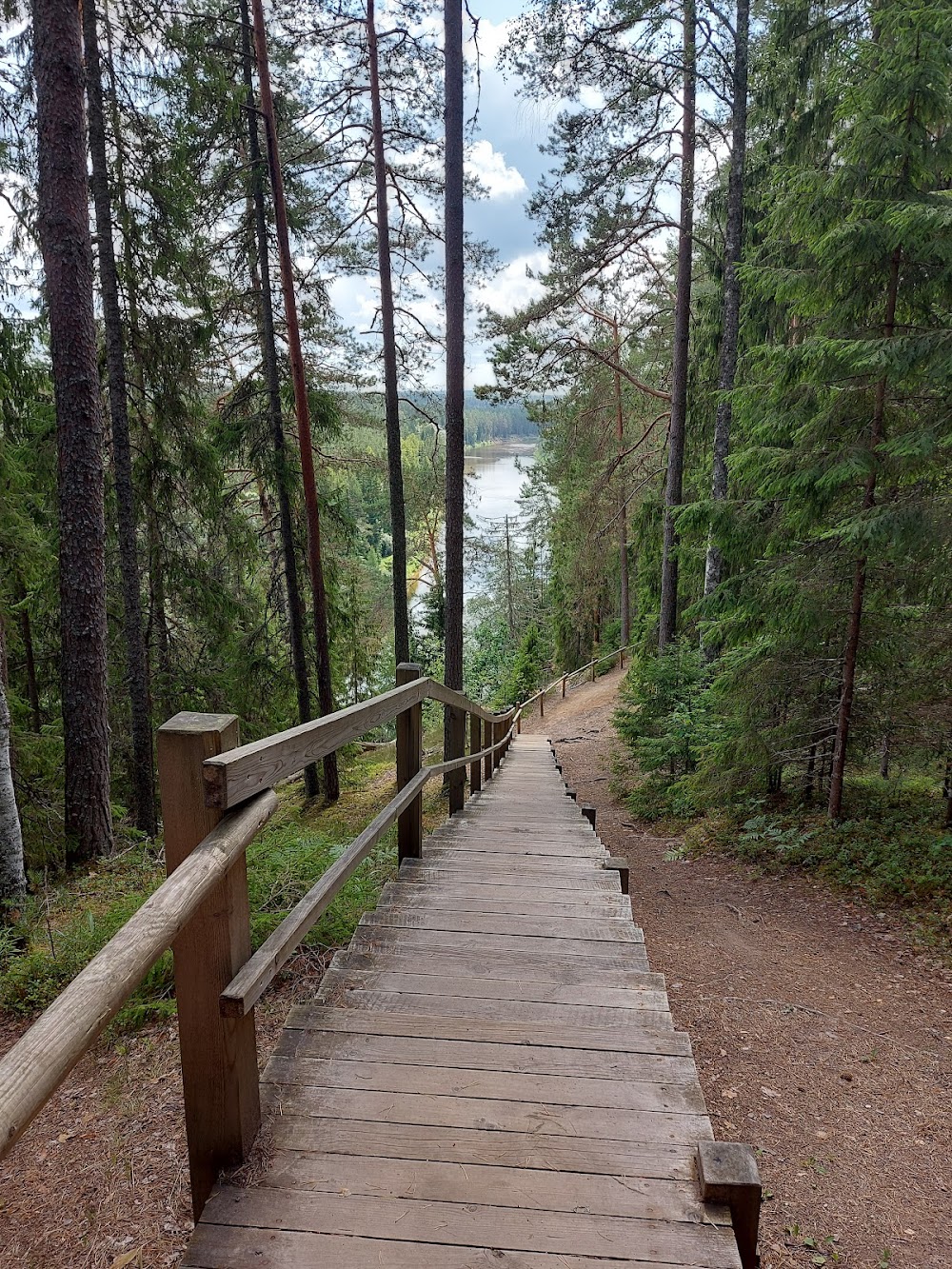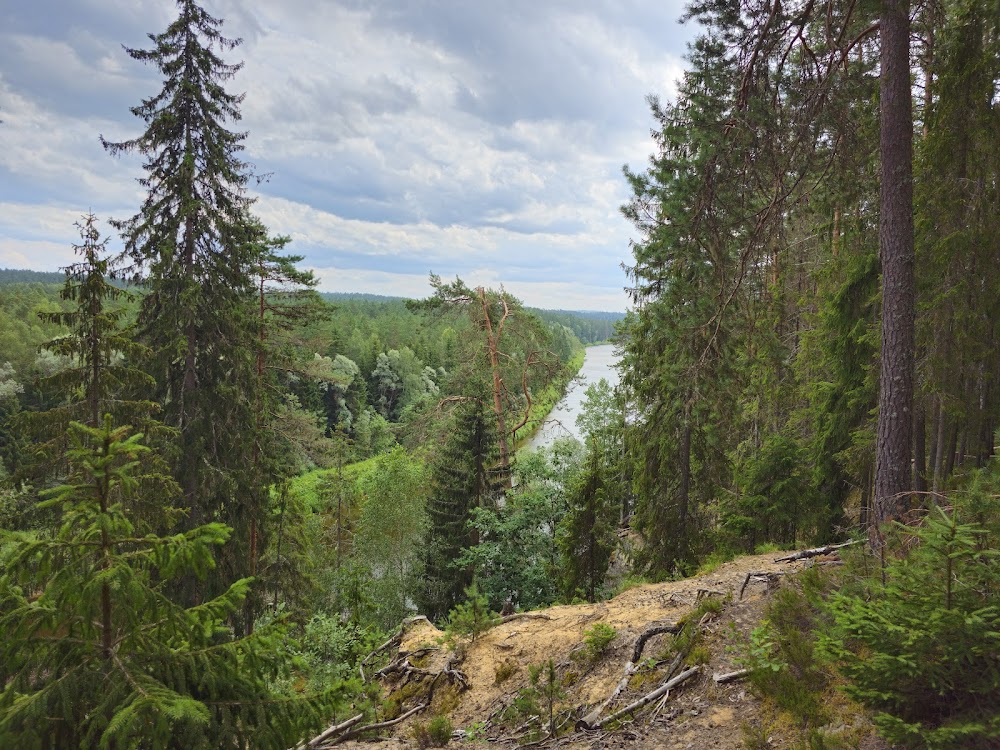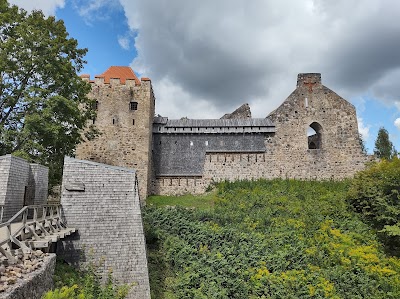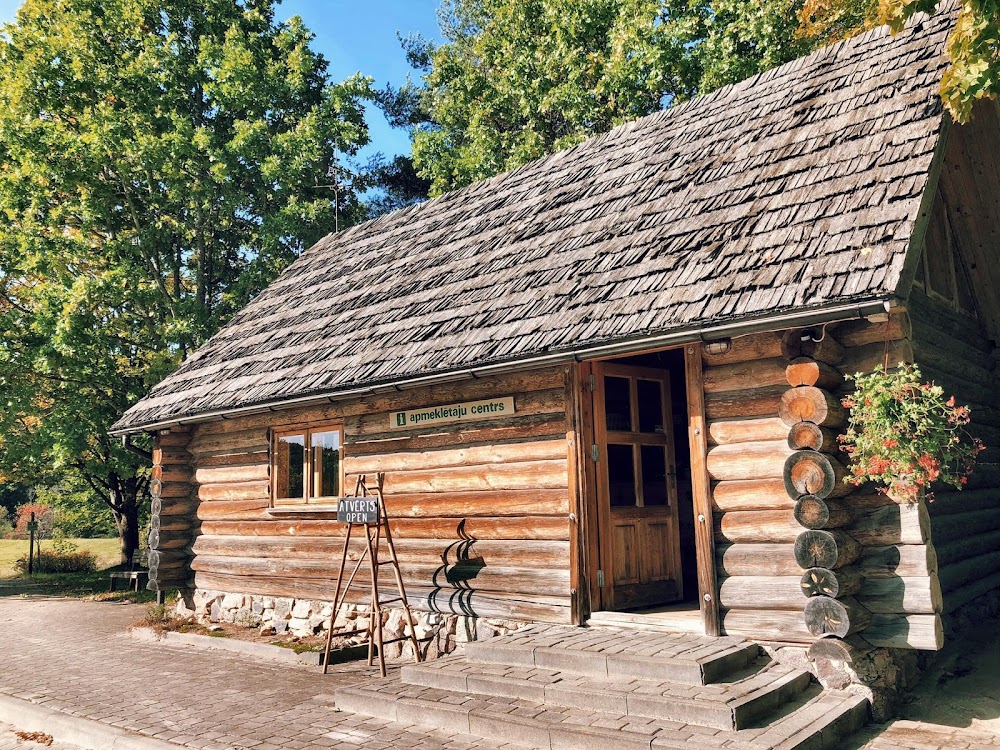Sietiņiezis White Rock (Sietiņiezis)
Overview
Nestled in the picturesque Pārgauja Municipality in Latvia, Sietiņiezis, also known as Sietiņiezis White Rock, is a breathtaking natural landmark renowned for its striking rock formations and scenic beauty. As one of the largest sandstone cliffs in Latvia, Sietiņiezis stands as a testament to the powerful forces of nature that have sculpted its majestic appearance over millions of years.
The story of Sietiņiezis dates back approximately 375 million years to the Devonian period, when the region was submerged under a shallow sea. During this time, sediments—primarily sand and mineral particles—settled on the sea floor. Over the ages, these layers of sand gradually compressed and hardened into sandstone, laying the foundation for what we now know as Sietiņiezis White Rock.
As tectonic activity caused the Earth's crust to shift and evolve, these buried sandstone layers were uplifted. The once-hidden formations were then subjected to relentless erosion from wind, rain, and ice, resulting in the intricate patterns, caves, and hollows that define the Sietiņiezis cliffs today.
Standing at an impressive height of up to 15 meters, Sietiņiezis is distinguished not only by its size but also by its unique structure. The white sandstone has been naturally shaped into an array of arches, columns, and porous surfaces, resembling a giant sieve—aptly reflected in its name (with 'Sietiņi' meaning 'sieve' in Latvian). The delicate designs on the cliffs have emerged from centuries of weathering, creating a stunning natural work of art.
One of the most captivating features of Sietiņiezis is the network of caves and niches that have formed within the rock. These small caves provide a habitat for various species of bats and contribute to the area's ecological diversity. The cliffs are adorned with a variety of mosses and lichens, adding vibrant splashes of green against the creamy white sandstone.
Visitors to Sietiņiezis can explore the cliffs via a well-maintained network of trails managed by Gauja National Park. These trails offer numerous viewpoints where tourists can enjoy panoramic vistas of the surrounding forest and the serene Gauja River. An observation platform atop the cliffs provides an excellent vantage point for photographers and nature enthusiasts, allowing them to capture the essence of this remarkable natural wonder.
Beyond its stunning landscapes, Sietiņiezis holds rich cultural significance, inspiring local folklore and legends. One popular tale tells of a giant who once lived among the cliffs and used the rock’s formations as a sieve to sift gold from the sand. Such enchanting stories add a mystical charm to the already captivating environment.
While Sietiņiezis is a magnificent natural monument, it also serves as a reminder of the importance of preserving our natural heritage. As part of Gauja National Park, Latvia's largest and oldest national park, Sietiņiezis enjoys protected status, ensuring that its natural beauty and ecological significance are maintained for future generations to appreciate.
In conclusion, Sietiņiezis White Rock in Pārgauja Municipality is more than just a geological marvel; it symbolizes the enduring power and beauty of nature. With its impressive cliffs, rich biodiversity, and captivating cultural tales, it is a must-visit destination for anyone exploring Latvia. Whether you come to hike the trails, immerse yourself in local legends, or simply bask in the serene beauty of the landscape, Sietiņiezis offers an unforgettable experience that connects you with both the ancient past and the timeless artistry of nature.


